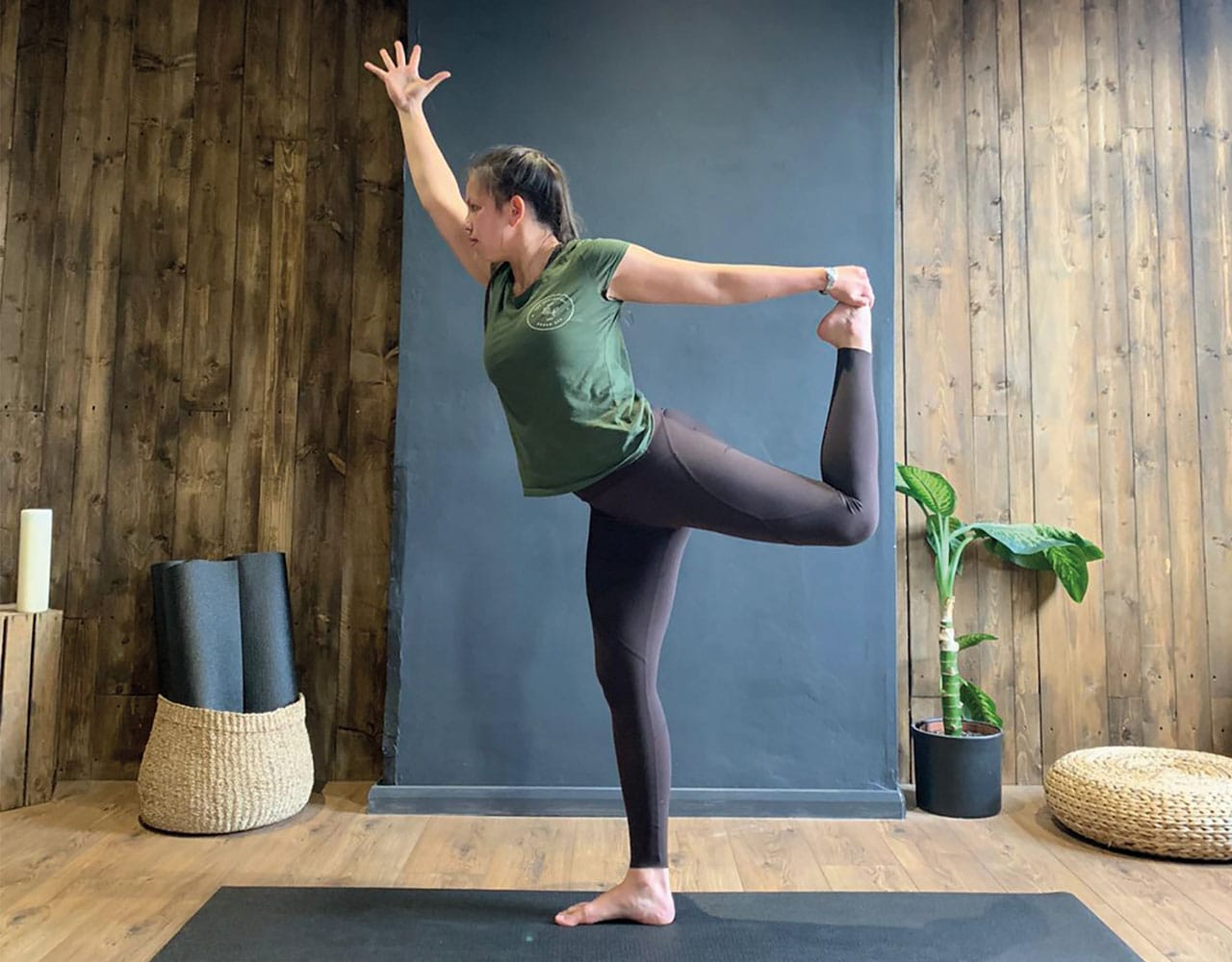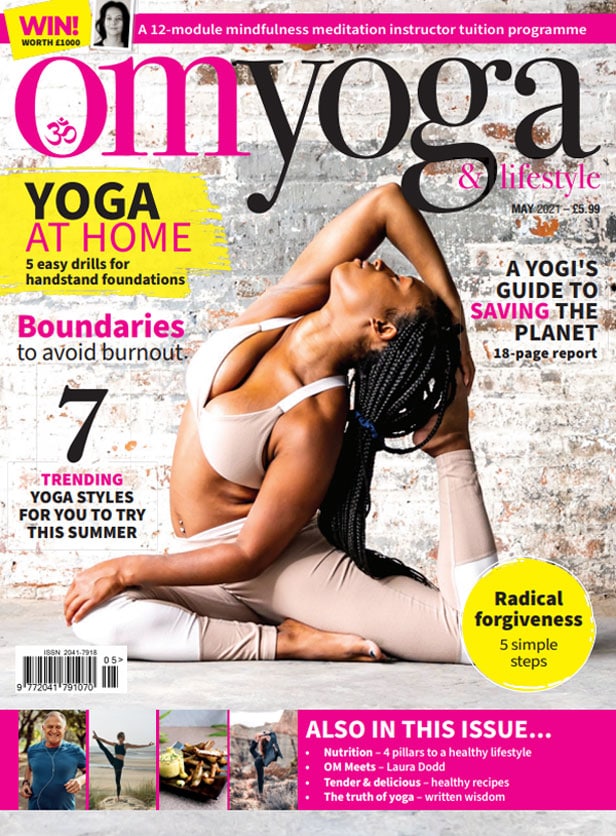
LYT Yoga
LYT Yoga is anatomically informed and designed to correct imbalances from a sedentary lifestyle. Caroline Nunn explains how she discovered this practice that’s ideal for modern times
I tore my meniscus for the first time at 18 years old, doing a squat with a heavy weight. I remember the awful pop, and the pain that ensued when I was unable to extend my knee. I tore it a second time during my first yoga teacher training, four years later.
Though it wasn’t nearly as bad as the first time, I was confused, disappointed and heartbroken that my multi-style, therapeutic yoga training didn’t ‘cure’ me of my knee pain. An MRI confirmed the tear and diagnosed a degeneration of the cartilage under my patella. My injuries, in addition to some personal loss that I experienced in 2018, led me to question my existing practice and what it was doing for me, physically, spiritually and emotionally. I guess things always happen for a reason, as I came across Lara Heimann, a physical therapist, and her own system of yoga, otherwise known as LYT Yoga.
Freedom from pain
I had come across Lara before on social media, absorbing little nuggets of her anatomical genius and integrating it into my own practice. She then created an online platform, and I began to move away from a strong and bendy, exclusively Ashtanga/Vinyasa practice, to one that was more anatomically informed. Still challenging, but quite simple and no frills in its structure and ideology…and also fun for the body and brain.
At the start of 2020, I registered for Lara’s 200-hour teacher training programme, the most comprehensive, anatomy-based training available taught by a physical therapist. It was this increased understanding in the body that has enabled me to live a (primarily!) pain-free life. I still have aches and pains from day to day, but I am now more equipped to discern where my movement is sub-optimal and imbalanced, acting as a contributor towards my pain.
Body functionality
LYT redefines yoga as we know it, serving as a gateway to a clearer mind and brighter spirit. Yoga is an ancient practice, and I know that sometimes ‘newer’ styles of yoga can be condemned and labelled a slap in the face of tradition. But when one of our guiding principles in yoga is Ahimsa (non-violence), why do many continue to exert themselves and harm their bodies for the sake of their practice? Today, yoga injuries are at an all-time high. There have been numerous reports of yoga teachers and practitioners living with chronic pain, even requiring surgical intervention when the extent of the damage is too severe.
A key pillar of LYT is its functionality, and its emphasis on smart and safer movement patterns that serve the longevity of the body. LYT rewires deviated, and potentially injurious, pathways that run between the body and brain, to enable you to simply live more freely and comfortably through better movement. Most of the yogic population will show up on their mats with existing imbalances, regardless of their experience levels. Many classes then perpetuate these imbalances, and the potential for injury increases. LYT does the opposite and rectifies imbalances on the get-go, through its unique sequencing and class structure that follows our own developmental patterning.
The Reset
Each class begins with The Reset. This consists of developmental exercises on the floor that aids in the establishment of a neutral spine and pelvis – two areas that a significant proportion of the population feel imbalances within. All movements in The Reset are intentional and are used to quickly fire up snoozy core stabilisers. This heightened connection to the core enables the body to stabilise more effectively, thus allowing movement to follow more easily.
Metaphysically, a heightened connection to our core allows for greater connection to the first three chakras, Muladhara, Svadhisthana and Manipura, to allow us to feel more grounded, lit-up, and strong in mind and body.
The Reset often begins in supine with glute work, as the glutes are key movers in the core complex. This is followed by an abdominal set. The abdominal set is gut-wrenching, but effective in waking up deeper abdominal muscles including the transverse abdominis and the internal obliques. The use of breath retention in abdominals also increases diaphragmatic activity and enables bigger and clearer breath to develop. Once these core stabilisers awaken, practitioners will move into quadruped (all-fours), exploring a variety of movements that will look to further challenge the core complex, including that of the shoulder. This is followed by a variation on Sun Salutations, to increase heat within the body.
Dynamic sequencing
The second section of any LYT class explores free-standing sequences, with Sun Salutation variations weaved in between sequences. The focus of this section is mobilisation, after the Reset cultivates stability within the body. This section encompasses creatively and thoughtfully choreographed sequences that builds on the focus of The Reset.
The symbiotic nature of the two sections enables movements to feel clearer. With the progression of the sequence, movement patterns get bigger. In LYT you can expect to move around your mat! You will constantly change directions and move in different planes to get out of our daily habits of facing and moving in primarily a frontal plane. LYT can also integrate plyometric exercise to spike heart rates, allowing for the improvement of cardiovascular fitness.
The Stream
Finally, the trademark of what makes LYT unique and effective is The Stream. This is the final stage of the practice, before relaxation. The philosophy behind The Stream stems from Lara’s decades of experience as a neurological physical therapist; it’s the idea that once new movement patterns are learnt, they need to be hardwired into the brain through repetition to be assumed as a new norm.
This is done through integration as sequences are ‘streamed’ together, whilst also increasing challenge. However, the body is now prepared to meet and respond to this challenge. Even though some may feel fatigued, the integration to the core, in addition to the warm familiarity of the sequencing, enables practitioners to move fluidly and certainly in a more functional way.
Yoga evolution
Yoga in itself has evolved over the years, and I think many of us forget that the kind of yoga we have now is of a mid-late 20th century incarnation. Yoga was once a handful of postures to prepare the practitioner for meditation, then introduced and redeveloped in the West. Our lifestyles have inevitably changed in recent decades, with many sedentary for a majority of their days.
With a majority of the Western population being seated for a significant proportion of the day, we need a practice that is anatomically informed that is a true prescription for this style of life. This is what LYT provides. Changes should always be welcome with an open mind, especially when it comes from a place of knowledge and reflection to enable us to live and be better – in itself a practice of Svadhyaya.
When we feel good in body, we feel stronger and stand taller, and we inevitably feel better in mind. When this occurs, we are more able to stand up and serve ourselves and others around us when needed.
Caroline Nunn teaches LYT to all abilities in Doncaster and Rotherham in South Yorkshire. She has over 500 hours of teacher training, including two certifications in LYT Yoga.


